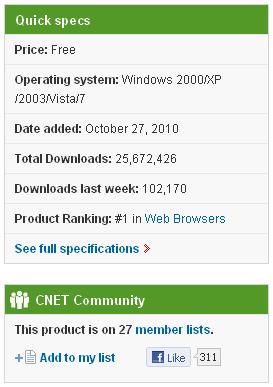When you hear someone refer to ‘optimising the website’ you probably think one of two routes – search engine optimisation or A/B and multi-variant testing.
What you probably don’t think of immediately is optimising your website’s credibility.
It doesn’t matter how well you’ve optimised your ecommerce funnel, how much traffic your search efforts bring, you’ll still be missing your potential if your visitors don’t trust you and your site.
They simply won’t buy, sign-up, download or recommend.
So how do you establish credibility?
Here are 5 ways…
1. Appearance
You have approximately 1/20th of a second to make a good first impression with a website visitor. That’s all it takes for someone to form an opinion of your site. Not long is it?
The classic quote in Conversion circles is from a study by B.J. Fogg from Stanford where it was revealed that ‘75% of respondents admit to making a judgement about the credibility of an organisation based on the design of the website’.
That study is over a decade old, but with advancements in design and technology and today’s more discerning web user with higher expectations, it would be surprising if that figure had not increased further.
So what does your site look like at first glance? Does it look modern and professional or does it look like it was built about the same time as Fogg’s study? Can a visitor tell immediately what your site does and how it will meet their needs?
You don’t need to spend a fortune on web design. There are plenty of low cost options (such as 99designs.com) if you don’t have the budget to hire a talented in-house designer yourself. Just make sure your site looks credible…somewhere you’d spend your own money.
(Bear in mind Google’s new Instant Preview functionality in search results – if a searcher hovers over the magnifying glass and your site appears, are they going to click or move on to the next site in the listing?)
2. Trust marks

Trust marks are (usually) logos from third parties that are designed to reassure the visitor. Typically they’re from known, reputable organisations that the visitor trusts. It’s like trust by association. If these companies have their logo on this site it must be a good/trustworthy site to use.
Good examples to use:
- Trade associations (if you’re a member)
- Industry institutes or bodies (if you’re a member)
- Secure payment handlers you use (i.e. Paypal)
- Consumer rights accreditation (i.e. Which? Best Buy award)
- Media logos (where mentioned)
- Client / partner logos
Using logos of the businesses that already work with you – either as a client or partner – can be a great way of reassuring a potential customer. If these big name companies that I recognise are using them, I guess it’s fine if we do too.
3. Social proof

Social proof is also known as the wisdom of the crowd – when in a situation where we’re unsure of a decision to make, humans tend to look to see how others have acted in that instance. If all those people have done it, I should probably do the same.
This can be a very powerful tool when optimising for conversions. The moments leading up to a purchase (or whatever your conversion metric may be) are where confidence waivers the most. If you can show that others have reached, and passed this point and are very happy they did, then it will do wonders for your conversion rate.
Examples of social proof are:
- Customer testimonials (keep them brief)
- Numbers (i.e. downloads, subscribers, etc.)
- Product reviews
4. Transaction reassurance
Everyone uses Amazon. It’s so synonymous with online retail that we rarely consider if anything untoward will happen when we buy our next book or lawnmower.
Most sites don’t have that luxury, however. For the rest of us, we need to reassure the visitor that their data is safe with us. You can do this by displaying the trust mark of your payment handler, but you should also consider how you would answer these visitor questions:
- Is this site secure?
- How and who will take my money? (i.e. Paypal)
- Do they have a returns policy or any guarantees?
- What happens to my data?
Answer these questions and you’ll be a step closer to the conversion.
5. Something for nothing
Okay, not strictly for ‘nothing’. You’ll want something in return.
Not all transactions will happen on the first visit. One of the main reasons for shopping cart abandonment is that sometimes visitors are just not ready to buy.
However, even if a visitor is just researching options, this is a great opportunity to build some credibility for your site. Take the opportunity to give them something – a buyer’s guide, weekly email tips or a tool – that is of some value to them. To appear to be helpful, to offer guidance, is to move you towards a ‘trusted advisor’ role.
In return, you’ll have collected their email address during this process, which combined with your new credible status, will make a future sale smoother.
These are just 5 ways to build credibility to help improve your conversion rates. There are many more. I’d love to hear what you’ve done on your own site, or any ideas you may have that others could try. Please feel free to share your thoughts via the comment section below.